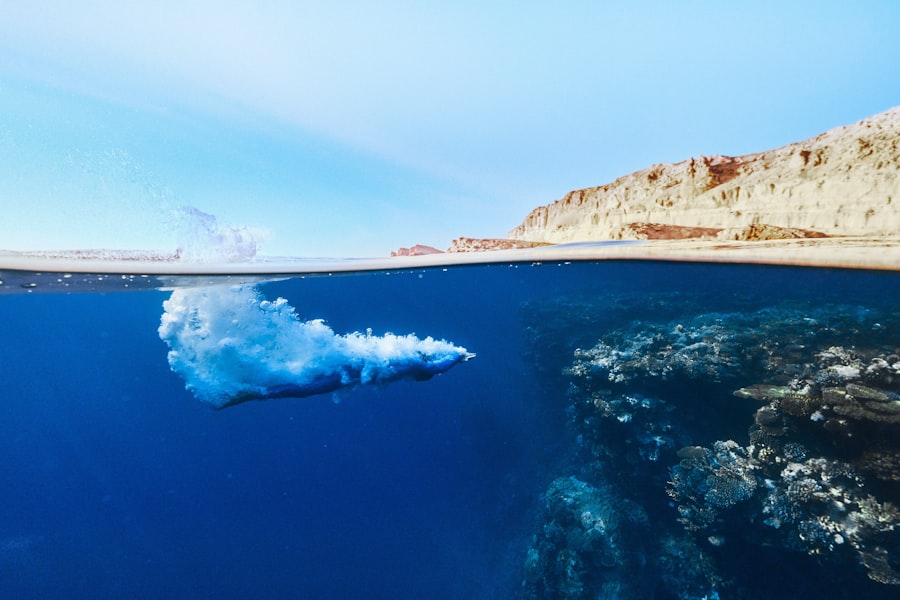Download links
How to install Exploring the Shallow Sea: A Diver's Adventure APK?
1. Tap the downloaded Exploring the Shallow Sea: A Diver's Adventure APK file.
2. Touch install.
3. Follow the steps on the screen.
Description
Shallow sea diving offers a unique and enchanting experience that captivates both novice and seasoned divers alike. The allure of exploring underwater environments that are often teeming with life and color is a significant draw for many. Unlike deeper dives, which can be intimidating and require extensive training, shallow sea diving typically occurs at depths of 30 feet or less, making it accessible to a broader audience.
The sunlight penetrates these shallower waters more effectively, illuminating the vibrant coral reefs, sandy bottoms, and diverse marine flora and fauna. This natural light creates a kaleidoscope of colors that can be mesmerizing, transforming the underwater landscape into a living canvas. Moreover, shallow sea diving allows for a more intimate connection with the marine environment.
Divers can take their time to observe the intricate details of coral formations, the delicate movements of small fish, and the subtle interactions between various species.
For instance, a diver might find themselves captivated by the graceful dance of a seahorse clinging to a piece of seagrass or the sudden flash of a school of small fish darting in unison.
These moments create lasting memories and foster a deeper appreciation for the ocean’s beauty.
Key Takeaways
- Shallow sea diving offers the opportunity to explore vibrant and diverse marine life in clear, shallow waters.
- Essential equipment for shallow sea diving includes a mask, snorkel, fins, and a wetsuit for protection and comfort.
- Dangers and risks of shallow sea diving include shallow water blackout, marine animal encounters, and potential entanglement in underwater vegetation.
- Marine life encountered in shallow sea diving may include colorful coral reefs, tropical fish, sea turtles, and other fascinating creatures.
- Tips for a successful shallow sea diving adventure include staying aware of your surroundings, practicing proper buoyancy control, and respecting the marine environment.
- Conservation and preservation efforts for shallow sea ecosystems are crucial for protecting the delicate balance of marine life and habitats, and can include initiatives such as marine protected areas and sustainable diving practices.
Equipment Needed for Shallow Sea Diving
The Importance of a Well-Fitted Mask
A well-fitted mask is crucial as it allows divers to see clearly underwater while preventing water from entering.
Snorkel and Fins: Enhancing Comfort and Mobility
The snorkel enables divers to breathe comfortably at the surface without lifting their heads out of the water, which is particularly useful in shallow areas where one might want to observe marine life without disturbing it. Fins are another vital component of diving equipment, as they enhance mobility and efficiency in the water. They allow divers to glide effortlessly through the water, conserving energy while exploring.
Wetsuit and Buoyancy Control Device: Thermal Protection and Neutral Buoyancy
A wetsuit is often recommended for shallow sea diving, especially in cooler waters, as it provides thermal protection and buoyancy. Depending on the water temperature, divers may choose between shorty wetsuits or full-length suits. Additionally, a buoyancy control device helps divers maintain neutral buoyancy, allowing them to hover effortlessly above the seafloor without disturbing delicate ecosystems.
Dangers and Risks of Shallow Sea Diving

While shallow sea diving is generally considered safer than deeper dives, it is not without its risks and dangers. One of the primary concerns is the potential for entanglement in underwater vegetation or fishing gear. Divers must remain vigilant and aware of their surroundings to avoid getting caught in nets or lines that could lead to panic or injury.
Another risk associated with shallow sea diving is the possibility of marine life encounters that could lead to injury. While many species are harmless, some can be dangerous if provoked or handled improperly.
For example, certain types of jellyfish possess stinging cells that can cause painful reactions, while others, like lionfish, have venomous spines that can inflict serious wounds. Divers should educate themselves about local marine life before diving and practice safe interactions with any creatures they encounter. Furthermore, sudden changes in weather conditions can also pose risks; strong currents or storms can develop unexpectedly, making it essential for divers to stay informed about local forecasts and conditions.
Marine Life Encountered in Shallow Sea Diving
| Species | Number Encountered | Size Range |
|---|---|---|
| Sea Turtles | 12 | 1-3 feet |
| Octopus | 8 | 6-24 inches |
| Stingrays | 5 | 2-6 feet |
| Seahorses | 15 | 1-5 inches |
One of the most rewarding aspects of shallow sea diving is the opportunity to encounter a diverse array of marine life. Coral reefs are often bustling with activity, serving as habitats for countless species. Divers may find themselves surrounded by colorful parrotfish nibbling on coral or schools of angelfish darting among the reef structures.
The biodiversity found in these ecosystems is astounding; for instance, a single coral reef can host over 1,500 species of fish and numerous invertebrates. In addition to fish, shallow waters are home to various other fascinating creatures. Sea turtles gracefully glide through the water, often appearing unbothered by the presence of divers.
These ancient mariners are not only beautiful but also play a crucial role in maintaining healthy seagrass beds and coral reefs. Divers may also encounter rays gliding along the sandy bottom or even the elusive octopus hiding among rocks and crevices. Each dive presents an opportunity for discovery, as no two experiences are ever the same.
Tips for a Successful Shallow Sea Diving Adventure
To ensure a successful shallow sea diving experience, preparation is key. First and foremost, divers should familiarize themselves with the dive site before entering the water. Researching local conditions, such as tides and currents, can help divers plan their dive effectively and avoid potential hazards.
Additionally, understanding the marine life that inhabits the area can enhance the experience; knowing what to look for can make encounters more rewarding. Another important tip is to dive with a buddy whenever possible. Having a partner not only enhances safety but also allows for shared experiences and discoveries underwater.
Communication between dive buddies is essential; establishing signals before entering the water can help ensure that both divers are on the same page throughout their adventure. Furthermore, taking time to practice buoyancy control and equalization techniques before diving can significantly improve comfort levels underwater.
Conservation and Preservation Efforts for Shallow Sea Ecosystems

Protecting Marine Habitats
To address these issues, organizations worldwide are working to implement measures that safeguard these vital habitats. One approach is the establishment of marine protected areas (MPAs), where fishing and other disruptive activities are restricted or prohibited. This helps to preserve the delicate balance of marine ecosystems.
Community Involvement and Education
Community involvement plays a crucial role in conservation efforts. Local organizations engage in educational programs to raise awareness about the importance of preserving marine ecosystems. These initiatives promote responsible diving practices among recreational divers and encourage sustainable tourism that benefits both local communities and marine environments.
Contributing to Conservation Efforts
Citizen science projects also allow divers to contribute valuable data on marine life populations and health, further aiding conservation efforts. By understanding the beauty and risks associated with shallow sea diving, and equipping themselves with knowledge and proper gear, divers can enjoy safe and fulfilling experiences while contributing to the protection of our oceans.
FAQs
What is shallow sea diving?
Shallow sea diving refers to the activity of diving in relatively shallow waters, typically up to 40 feet deep. It is popular among recreational divers and allows for easy access to a variety of marine life and underwater landscapes.
What are the benefits of shallow sea diving?
Shallow sea diving offers the opportunity to explore vibrant marine ecosystems, encounter a diverse range of marine life, and observe colorful coral reefs. It is also generally considered to be a safer and more accessible form of diving compared to deeper dives.
What equipment is needed for shallow sea diving?
Basic equipment for shallow sea diving includes a mask, snorkel, fins, wetsuit or rash guard, buoyancy control device (BCD), regulator, and a tank of compressed air. Divers may also use underwater cameras and dive lights to enhance their experience.
What are some popular shallow sea diving destinations?
Popular shallow sea diving destinations include the Caribbean, the Red Sea, the Great Barrier Reef in Australia, and various coastal areas around the world. These locations offer clear waters, abundant marine life, and stunning underwater landscapes for divers to explore.
What are some safety considerations for shallow sea diving?
Safety considerations for shallow sea diving include proper training and certification, checking equipment for proper functioning, monitoring air supply, staying within safe depth limits, and being aware of potential hazards such as marine life and currents. It is important for divers to follow established diving protocols and guidelines.





